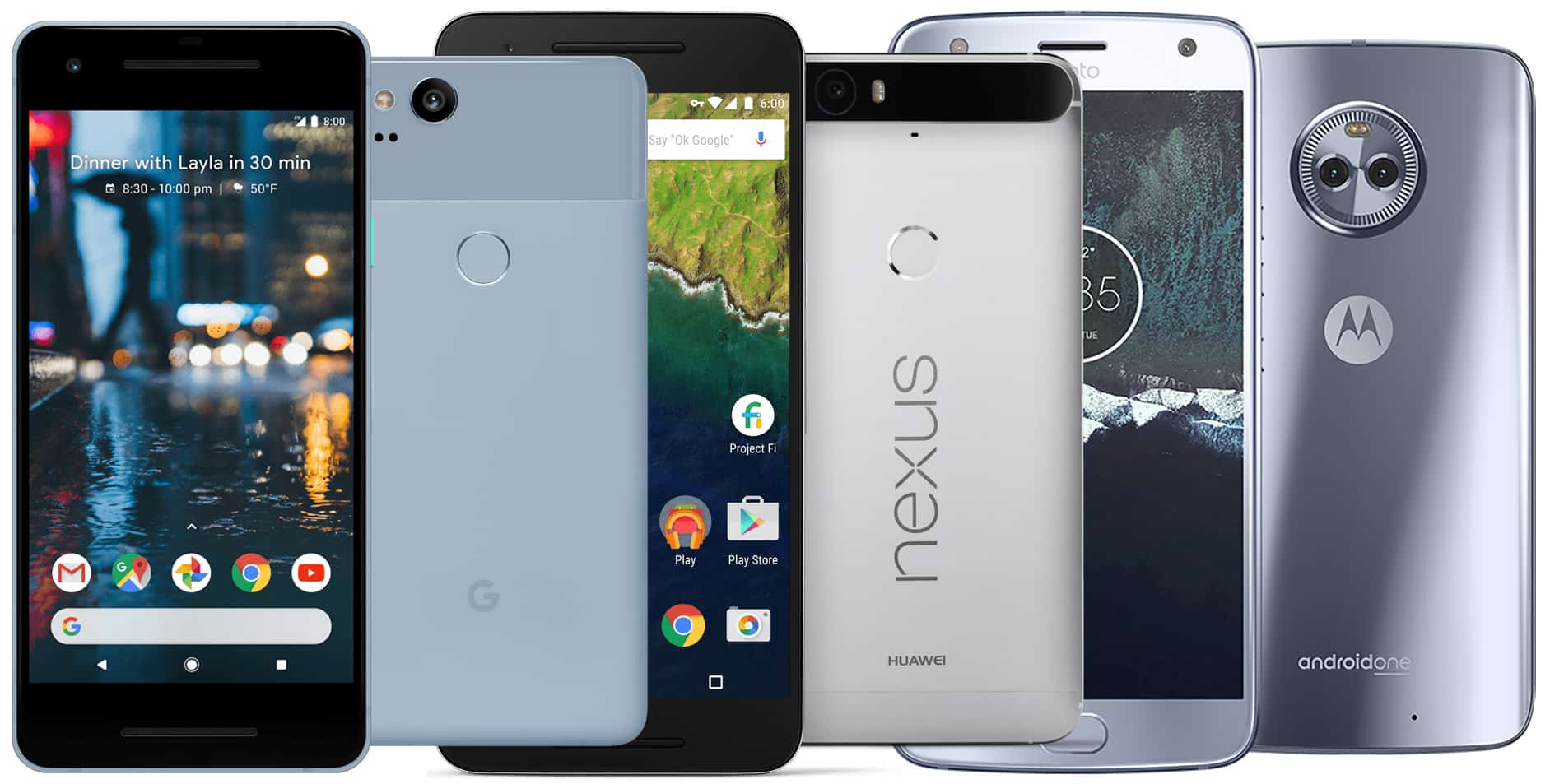Affordable Data and Phone Service for International Travel with Google Fi
Explore Google Fi for international travel, offering flexible plans and eSIM compatibility for iPhones. Discover cost-effective connectivity options.

If you are traveling outside of the US and want to stay connected then Google Fi might be for you. When Google Fi originally launched as an invite only mobile MVNO under the name Project Fi you had to use it with a Google Fi approved phone. Which as you might imagine were Google’s own line of Pixel phones and a couple of Motorola SKU’s while Motorola was owned by Google.

This was a pretty large restriction which severely limited the audience for Google Fi to those using Google branded phones, or willing to go through extra steps to make another phone work in an unsupported fashion.
A lot has changed however in the last year, with Google Fi being opened to almost anyone with a modern smartphone. You can check the current list of compatible phones directly with Google here.
Does Google Fi work with an iPhone?
Yes, Google Fi does with with an iPhone. With recent changes in 2020 you can now also use Google Fi on the eSIM in your iPhone as well. Saving the hassle of having to have a SIM card mailed is great, and also allows you to have dual SIM usage on the iPhone with Fi so you can just use the eSIM when travelling if you prefer.
Do know that the main limitation of using Fi with the iPhone currently is the lack of Wi-Fi based calling and Texting.
So assuming you have a compatible phone should you switch to Google Fi or get a Google Fi SIM for an upcoming trip?
Will Fi save me money?
Let’s start with the scenario of getting Google Fi for an upcoming trip outside of the US. The coverage for Google Fi is really hard to beat, currently you are covered with the same rates in over 200 countries. We do not know of a more competitive provider with a similarly comparable list of roaming partners at fixed pricing with no surprises. So what is that pricing?
Google has recently updating their plans and introduced a second option. Let’s start with the most flexible option which not ironically has the same name ‘Flexible Plan’. This is $20 for your first line which includes unlimited calls in the US and discounted calls abroad usually at 20 cents per minute. You have unlimited texting/SMS anywhere you have coverage in the US or International with no additional fee’s. Data is billed at $10 per GB. After you have used 6GB your data billing is capped, so your maximum billing before taxes is $80 for a single line. You can use more than 6GB of data with no additional fees, if you go over 15GB of usage your data speed might be reduced. If you need more speed after that you can opt out of bill protection and continue paying $10 per GB for as much as you like.
Realistically 15 GB in a given month is a lot of data, specially in the world we live in where Wi-Fi is generally available at hotels or major points of interest. So unless you are watching videos all day when you are away from your hotel this should not be a limit you are bumping up against.
If you want to add more lines under the Flexible plan it is $15 for each additional line of service.
The second recently introduced option is the Unlimited plan. This is a fixed $70 per month plus taxes, it includes unlimited data anywhere in the world up to 22GB, the same texting and calling options as the Flexible plan but does give you some discounted International calling rates from the US. You get an increasing discount for adding additional lines, with 2 lines going to $60 each, 3 dropping to $50 each and finally 4+ lines ending at $45 each. The Unlimited plan does include Google One for all members with 100GB per line for storage of things such as Google Photos. This is only a $1.99 value though so I would not have this heavily influence your decision. But if it’s something you already are paying for, it’s an added benefit.
What if you have additional devices like a hotspot or a tablet? Both plans allow for up to 4 additional data SIMs on your account. There are no monthly charges or setup fees to activate these SIM’s. You just pay for usage at the $10 per GB. This is a pretty awesome perk.
You can also pause your service for up to 3 months without penalty if you travel off and on and only want to have pro-rated service when you need it. Pro-rating is only available on the Flexible plan however. Otherwise your pause date will start/stop on your plan billing date with no pro-rating. After 3 months, it will turn back on automatically and you will need to pay for a month before you can pause again.
Looking for a way to save some money when abroad with multiple family members?
Activate a single Fi line for one persons phone. Then order data only sims for your other family members. This way everyone can put a SIM card in their phone and stay in touch with data based apps such as Facebook Messenger, Skype, WhatsApp, Discord, etc. You also have email, maps, etc. If you think about how much you actually need to make ‘phone’ calls these days vs having access to data, this can save you a lot of money. And you can also still make phone calls using Skype, Hangouts or other apps which allow you to make normal phone calls over data for a small per minute fee. You could have a month of service for 5 people for ~$90 with taxes on Google Fi. For example, if you had 5 people on the AT&T International Day Pass for $10, you would be paying $50 per day in fee’s alone, keep this in mind as if you have multiple devices when you travel this can add up very fast on other carriers.

What are my International roaming options with Verizon, Sprint, AT&T or T-Mobile?
Don’t fret, if you are with a major carrier today and about to leave on a trip you’ve got options. And in some cases, they are actually pretty decent ones to boot. Keep in mind if you decide to use any of the speed or data upgrade plans on the major carriers they charge their fees for each line, not just the account.
T-Mobile
If you are currently with T-Mobile in the US or thinking of switching, plans start at $70 per month tax inclusive and include International data and texting. Coverage is also good with 200+ countries, however speed when outside of North America is limited to 128Kbps. If this does not have a lot of meaning to you, suffice it to say it is slow. Very, very slow. Pulling up a web page will most likely not be measured in seconds, but in the minute+ category. This can sound like an ok trade off, until you are trying to find a restaurant to eat at and realize just clicking on the top few choices to read reviews and you’ve already wasted 10-15 minutes waiting for pages to load. However if you are not using your phone most of the day except for things such as messaging family and friends, posting occasional photos or getting directions on maps (make sure to download them offline in advance) this will work just fine. You can upgrade with PlusUp for $15 extra per month to double your speed to 256Kbps. This is still very slow sadly, and a little bit in the diminishing returns category. You would be better off purchasing an International Pass for data on your plan. You can opt for 5GB of high speed LTE for $35 to be used within 10 days, or 15GB of high speed LTE for $50 to be used within 30 days.
AT&T
If you have AT&T you can opt for their International Day Pass which comes in at $10 per day. You can check the coverage to verify your destination is covered as it is a more limited list than Google Fi or T-Mobile. What do you get for your $10? You essentially get access to whatever plan you have back in the US. So if you have a plan with 20GB per month in the US, any high speed data you use abroad will count against that 20GB plan. You can also send unlimited SMS messages, and make calls back to the US and calls within and to any countries covered by the International Day Pass. If you already have a good plan with AT&T you are happy with at home, and you are not going to be travelling for an extended period the $10 per day fee might make sense. If you are just visiting someplace for a week or so, not having the hassle of switching carriers vs the money saved is a nice win here.
Sprint
If you have Sprint you are also eligible for International roaming with most of their newer plans. Like T-Mobile your speed is limited to 2G (128Kbps) speeds. Coverage is decent, with their upside being you can upgrade to 4G/LTE data roaming speeds for just $5 per day, or $25 for a week.
Verizon
Verizon does have options, but unfortunately it’s currently the worst of the major carriers for International roaming. Coverage is the smallest with around 185 countries. You are still charged $10 per day for their TravelPlus add-on service, but your speed is only high speed for the first 500 MB of data. Which is to say very little, and then you are slowed to 2G speeds again.
Local SIM card
Your other option of course is to buy a SIM card at your destination country. This is often fairly straight forward to accomplish and might save you some money if you are staying in a single country. We used to recommend this a lot 2-3 years ago, but unless you are going somewhere for an extended period of time any longer it is hard to justify the effort. You will also need to ensure your current phone accepts GSM cards and is SIM unlocked. There is savings to be had with some countries offering pre-paid SIM cards as cheap at $15 for 15GB of data valid for 30 days, etc.
Should you switch your current service to Google Fi?
Here’s the thing, in the US if you are using a phone designed for Google Fi you get access to T-Mobile, Sprint and the US Cellular networks. So coverage is pretty great, however if you are bringing a device like an Apple iPhone or a Samsung Galaxy you will only have access to T-Mobile. I’m going to assume you are in the later category and will be network limited to T-Mobile in the US. In this case it will depend on your needs of course. If you are just going to have a one time trip outside the US for a couple of weeks, look at what your costs are going to be based on your current carrier with the information about them above. Some offer additional benefits such as free Netflix with T-Mobile on most plans, or free Hulu with Sprint as perks for example.
We moved our services to Google Fi, but we actually utilize the additional data SIM’s in our devices in addition to our lines. We also travel outside the US frequently, and after trying to utilize T-Mobile to save money found we were costing ourselves so much time with the reduced speeds it just wasn’t worth the trade-off. If you could just order data SIM’s from Google Fi at $10 per GB with no lines, I would recommend them all day long to anyone looking to travel outside the US without question.
If you are going to be travelling for more than a week, you may find it still make sense to order a new line from Google Fi and data SIM’s for your family members and just keep the service for the time you need and then cancel or pause your service. The sweet spot is really going to be if you need more than a single device when you travel, as the data upgrade packages as illustrated above can add up quickly when you multiple them over more than one device. Google Fi is not yet a fit for everyone, given the size of Google we all expected them to offer a lot more than they have compared to the other players in the market. But so far, it can be a good fit for a certain niche of people.
If you fit that niche and decide to sign up if you use our link you will receive a $20 referral credit when signing up. Full disclosure we also get a referral credit which helps keep the blog going.




